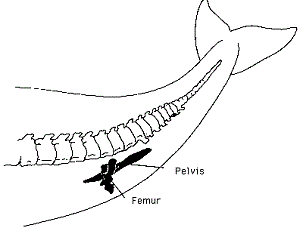Homologous Structures
Structures that look the same but have different functions are called homologous structures. This fact helps us infer that these organisms are linked by the same evolutionary origin. For example, the structure of a human arm, bird's wing and a horse's leg all resemble but have completely different functions; however our evolutionary origin may be similar. Analogous features are structures of organisms that look the same and have the same function but are not linked by the same evolutionary origin.Embryology
The study of how life of organisms form is called embryology. Sometimes, different organisms have similar ways of forming in embryos which suggests that these organisms may have been descended by the similar ancestors generations ago. For example, in the picture below, you can see how in the beginning the fish, turtle,salamander and human all look the same as they are first formed but turn out completely different in the end.
 |
| top left - fish, top right - turtle, bottom left - salamander, bottom right - human |
Vestigial Features
Structures that have no function and are useless are called vestigial features; however, these features suggest that they might have been used in an ancient ancestor. For example, dogs, pigs and horses have a vestigial toe. There isn't a purpose for it but since it isn't causing any trouble, the vestigial feature is not removed. This suggests that they may have a common ancestor.
 |
| A whale's pelvic bone is a vestigial feature. |
Biochemistry
Biochemistry is the difference between humans and other organisms. It mainly depends on the type of protein and the different sequences of amino acids. The bigger the difference in an amino acid sequence, the more different organisms are going to be. For example, a human is close to a macaque than a lamprey. This is because the number of amino acids differences are less between a human and a macaque than a human and a lamprey. Another factor are also the genes and DNA. Humans look different from each other because of the change in their DNA. This idea relates back to embryology. The more similar amino acid sequences are, the chance of two organisms having a similar ancestor is more common.
Bibliography:
Ellis-Christensen, Tricia. "What is Embryology?" wiseGEEK. N.p., n.d. Web. 26
Apr. 2011. <http://www.wisegeek.com/what-is-embryology.htm>.
"Evidence from comparative embryology ." Notes for Lecture #2. N.p., n.d. Web.
26 Apr. 2011. <http://statistics.arizona.edu/courses/EEB182/Lecture02/
lect2.html>.
Evolution. N.p., n.d. Web. 26 Apr. 2011. <http://www.biologyjunction.com/
evolution%20qz.html>.
Whitney, and Ryan. "Contrast homologous structures with analogous structures."
Evolution . N.p., n.d. Web. 26 Apr. 2011.
<http://evolutionwikirw.wikispaces.com/>.
Ritter, Bob, K.L. Burley, and Douglas Fraser. "Evidence of a Changing Earth."
Biology. 2007. Print.
No comments:
Post a Comment